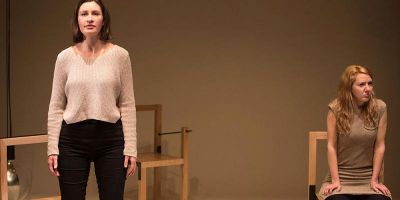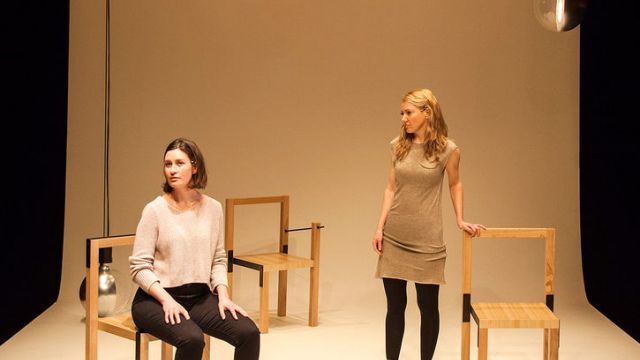They Saw a Thylacine
They Saw a Thylacine premiered in 2013 at the Melbourne Fringe Festival (winning the Tour Ready and Best Performance awards and many others), and last year had a season at the Malthouse Theatre. Most critics raved, and with good reason; it’s so superbly crafted. Central to success of the production is the tone of the main characters (and one or two notable minor ones). Justine Campbell and Sarah Hamilton each wrote their own parts, creating and performing distinct and different voices. Beatie McCullough (Ms Hamilton) is a tracker hoping to catch a thylacine alive, able to live entirely in and off the bush. Her vernacular identifies her as belonging to the working class in the late 1800s. Alison Reid (Ms Campbell) was the daughter of the zookeeper of Beaumaris Zoo who is especially attached to the thylacine, Ben. Alison is more socially refined and the language she uses is recognisably 1930s. A major side character, Fred (Ms Campbell), is characterised with a particular side on posture and a low, smoky, masculine drawl full of lazy menace. In spite of their differences, the two voices used similar rhythms and phrasing, weaving together the two parallel stories seamlessly.
 What makes it work beautifully is the vividness of the description. The story has an almost magical realist lushness. The audience can imagine the bush, the shock of the freezing water Beatie bathes in, the feel of the snow, and the iron gate Alison attempts to climb as she tries to break into the zoo to tend to thylacine Ben. We can hear the distress in Ben’s cries. There is an environmental and feminist message.
What makes it work beautifully is the vividness of the description. The story has an almost magical realist lushness. The audience can imagine the bush, the shock of the freezing water Beatie bathes in, the feel of the snow, and the iron gate Alison attempts to climb as she tries to break into the zoo to tend to thylacine Ben. We can hear the distress in Ben’s cries. There is an environmental and feminist message.
Matthew Adey’s set design and costumes are minimalist with a limited palette of largely light beige, so that the visual scene wouldn’t clash with the audience’s own imagined images. For the same reason, movement on the stage was kept simple and stylised, letting the voice characterisations shine. Being based so strongly on the sound, the show would adapt perfectly for radio or podcast.
Kudos to the Q for nabbing a short season of this well-polished little gem. There is some very strong language so parents should use discretion as to whether to bring children.
Cathy Bannister
Subscribe to our E-Newsletter, buy our latest print edition or find a Performing Arts book at Book Nook.

